Rewetting is looking increasingly like the defining issue for farming, and indeed rural Ireland, in relation to the Government’s climate change policy.
Last Wednesday, the biggest public meeting on the issue to date, organised by the IFA, saw over 200 farmers present for over three hours of back-and-forth with representatives of the Department of Agriculture and the National Parks and Wildlife Service (NPWS).
This meeting took place against the backdrop of Brussels battles over beefed-up nature restoration laws, which include proposals that would require most of Ireland’s drained peatlands to be rewet.
The most obvious problem is that most people don’t know what rewetting means. Is it a change to how you farm, or is it the effective end of farming on rewet land?
The Government is making soothing noises in this regard, while Michael Fitzmaurice is representative of the belief that it could signal the death-knell for the worst-affected farming communities.
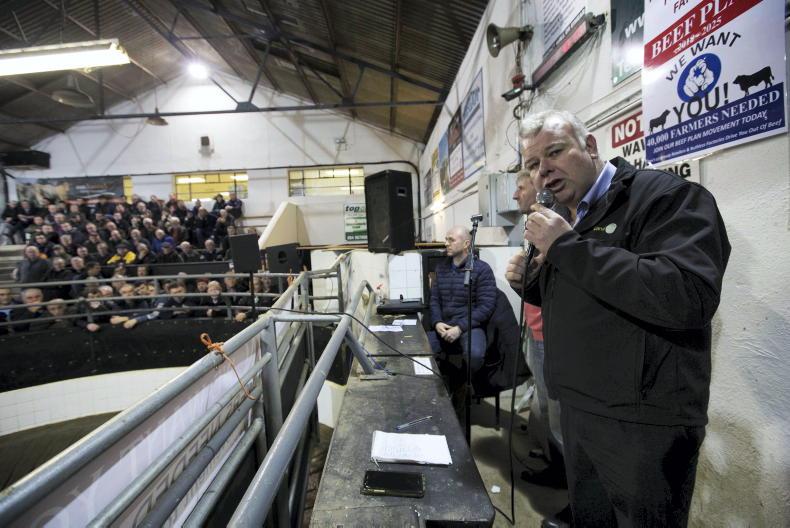
Michael Fitzmaurice. \ Brian Farrell
We need farmers to be able to see rewet farms with their own eyes.
It’s hardly a surprise that farmers would be apprehensive of and negative towards a programme of action that would see the reversal of painstaking work carried out by themselves and their predecessors to make their land more productive in terms of farming output.
And reassurances that it will all work out mean little, particularly when they are from a source that farmers might be wary of at the best of times.
We know that demonstration farms work, they have been key to all sorts of encouraged development on Ireland’s family farms.
Whether it’s Moorepark, Greenfield or Shinagh dairy farms, Oakpark tillage research centre, Grange or the Irish Farmers Journal’s Tullamore Farm, or the 100 Signpost farms being rolled out around the country, farmers can see exactly what is taking place.
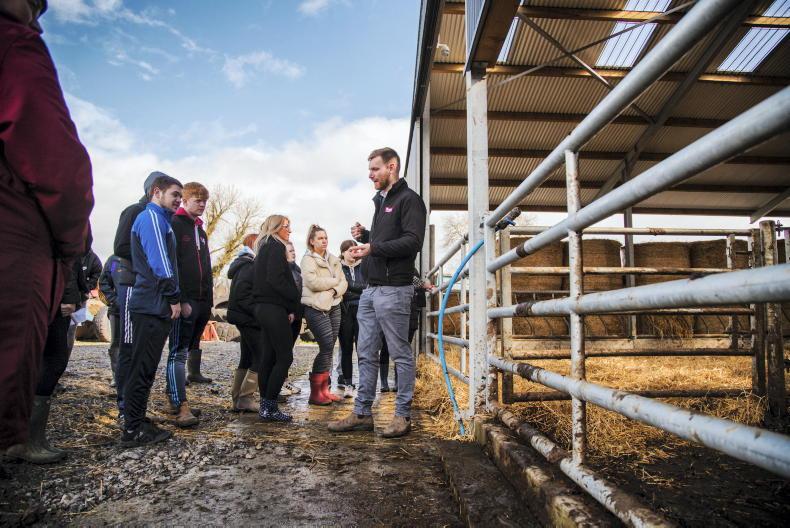
The Agri Aware open day on Tullamore Farm earlier this year. \ Claire Nash
There is no substitute for walking around and seeing a farm for yourself.
And yet, we don’t have a rewet demonstration farm that farmers can go visit.
Even though this is the most profound land use change farmers have been asked to consider, there is no model for them to evaluate.
Of course, there are individual farmers who are doing some rewetting of their own, but that is an entirely different thing.
Data
If you go to an open day in Oakpark or Moorepark or Grange or Johnstown, you will see how the farm looks, but you will also see a lot of data, as everything is measured on a research farm.
What kind of data could a rewet farm convey? I am no expert, far from it, but I can think of loads of statistical information that would be invaluable.
For instance, how close to the surface is the water table? A well-designed research project would have fields rewet at different levels, with a control field or two unchanged.
It would be of interest to know how many days of the year these various fields were saturated, and how many days they were grazable.
With a higher water table and less permeable soil, fertiliser application would be challenging.
For that reason, it would be interesting to see high-clover pastures and multispecies swards in operation. Would their growing pattern complement or run counter to the times of year when the land was trafficable?
In the absence of specifics, farmers can be forgiven for fearing the worst
What about parasites? Would liver fluke be a particular problem for sheep and cattle in rewet lands? Would that make rewet farms less suitable for organic farming?
And what does land next to rewet land look like? Is it affected and, if so, what are the practical implications for farming?
Are there crops that would like rewet soils? I know that rice needs soil temperatures higher than those we have in Ireland, but perhaps there are other related crops. If not, should we be trying to breed them?
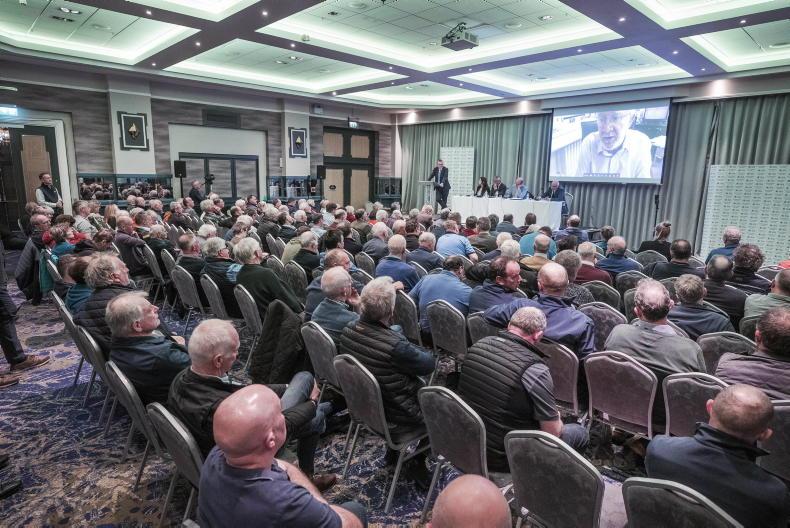
IFA nature restoration law meeting in Tullamore on Wednesday 12 May 2023. / Finbarr O'Rourke
For now, we know none of these things, because it’s all talk and no action from the Government.
I understand that the Department and NPWS personnel present at last Wednesday evening’s rewetting meeting were extremely short on detail when pressed on any specifics as to what rewetting will mean.
And in the absence of specifics, farmers can be forgiven for fearing the worst. It’s understandable that they would suspect the reason there aren’t any demonstration farms showing what rewetting looks like is because they wouldn’t paint a pretty picture. Farmers think that while the Government does all the talking, all the walking is being left for them to do. And it looks rather like hard yards all the way.
Overall land policy now needed
We really need a cohesive overall land use policy, with rewet land receiving priority status for land uses that are complementary to it.
Instead, we get piecemeal separate policies, ones which often are conflicting rather than complementary.
I suppose as a tillage farmer I should be in favour of proposals leveraging land leasing tax incentives so that land is leased to tillage farmers.
I’m sorry, but I ’m not.
I know the Government has an ambition to increase tillage acreage. I know that currently the tillage base is shrinking.
It’s true to say that tillage farmers are losing land that they were leasing or renting, and mainly to dairy farmers.
It’s also true that prior to dairy expansion, tillage farmers were often top dog, renting huge tracts of land.
At least, some tillage farmers were. And I wished them nothing but luck, but the fact that they aren’t top dog any more doesn’t keep me awake at night.
Generational renewal
The reality is that the tax incentives for people who lease out their land were supposed to be about land mobility and generational renewal.
Therefore, we should be leveraging the system towards younger farmers. And in particular toward younger farmers building off a small base, not starting out with 500ha of tillage, 300 dairy cows, or a large drystock operation.
I’ve written that before, and it’s no less true now than then.
Anyway, that is just one small example of where one change in farm policy - nitrates and cow-banding - has the consequence of dairy farmers paying crazy money to lease land over the heads of tillage farmers.
So we now prioritise tillage farmers to rebalance. Except there are only 17,000 dairy farmers, and fewer than 5,000 tillage farmers. That’s ignoring 100,000 other farmers and their needs; I simply don’t get it.
Goals
I’m not saying an overall land policy should be prescriptive, but it should exist with stated objectives identified.
For me, one of those objectives would be to ensure that farmers whose lands are likely to be rewet to some degree by 2050 are first in the queue for any suitable alternative land use.
Top of that list is surely solar farms. Unless the land is under water, solar panels would be unaffected by a higher water table.
If the land is under water, then it’s being taken permanently out of any use. If that is the reality of rewetting, we are heading for a world of trouble.
If land will be under some water some of the time, raise the legs the solar panels are sitting on.
And then when the land is grazable, sheep could happily (we’re told) co-exist with the solar farm.
It seems logical, but we are seeing most solar farms popping up on the best for mineral soil.
Why is that? It’s because the most well-off and well-resourced farmers are on such land.
Smaller, lower-income, less intensive farms are more likely to be found on heavy peatland.
In addition, infrastructure vital for solar farms, such as sub-stations, is more likely to be found in the more densely populated areas.
This kind of gap between what is the logical best land use and what is actually happening on the ground will continue until the Government grasps this nettle.
I know the Government is at pains to say that rewetting will not be forced on individual farmers.
It doesn’t add up
I don’t doubt the sincerity of that statement, but the maths simply don’t add up.
If the proposals being driven through Brussels right now are to be understood, most drained peatlands will have to be rewet, whatever that means, by 2050.
We are beginning to see what “no forced reduction in dairy farmers cow numbers” looks like.
You don’t have to cut numbers, provided you take extra land, export a significant proportion of your slurry, change your cow type, or get all non-milking beasts off the land, while also probably having to build extra slurry storage capacity.
It would be more politically difficult, but also more honest, to have said two years ago that dairy farmers would have to de-intensify their stocking rate.
Without wanting to sound like a broken record, competing land-use demands are going to massively exceed the available land base.
Rewetting, solar and wind farms, bioenergy and biomass crops, afforestation, and farming. It’s not all going to work, and there’s no use basing a climate change strategy on false optimism.
The other big issue is funding. The expectation from those who hold the purse strings, particularly in Brussels, is that current funding will have to stretch to meet the new demands on farming.
That is another sum that isn't adding up.
Farmers and their leaders have been accused of having their head in the sand when it came to accepting the realities of transforming the environmental footprint of food production.
The shoe is now on the other foot, with farmers saying that legislators and bureaucrats are in denial over the cost of the required response.
We need to dispense with the magic maths, and start to deal in realities.
Rewetting is looking increasingly like the defining issue for farming, and indeed rural Ireland, in relation to the Government’s climate change policy.
Last Wednesday, the biggest public meeting on the issue to date, organised by the IFA, saw over 200 farmers present for over three hours of back-and-forth with representatives of the Department of Agriculture and the National Parks and Wildlife Service (NPWS).
This meeting took place against the backdrop of Brussels battles over beefed-up nature restoration laws, which include proposals that would require most of Ireland’s drained peatlands to be rewet.
The most obvious problem is that most people don’t know what rewetting means. Is it a change to how you farm, or is it the effective end of farming on rewet land?
The Government is making soothing noises in this regard, while Michael Fitzmaurice is representative of the belief that it could signal the death-knell for the worst-affected farming communities.

Michael Fitzmaurice. \ Brian Farrell
We need farmers to be able to see rewet farms with their own eyes.
It’s hardly a surprise that farmers would be apprehensive of and negative towards a programme of action that would see the reversal of painstaking work carried out by themselves and their predecessors to make their land more productive in terms of farming output.
And reassurances that it will all work out mean little, particularly when they are from a source that farmers might be wary of at the best of times.
We know that demonstration farms work, they have been key to all sorts of encouraged development on Ireland’s family farms.
Whether it’s Moorepark, Greenfield or Shinagh dairy farms, Oakpark tillage research centre, Grange or the Irish Farmers Journal’s Tullamore Farm, or the 100 Signpost farms being rolled out around the country, farmers can see exactly what is taking place.

The Agri Aware open day on Tullamore Farm earlier this year. \ Claire Nash
There is no substitute for walking around and seeing a farm for yourself.
And yet, we don’t have a rewet demonstration farm that farmers can go visit.
Even though this is the most profound land use change farmers have been asked to consider, there is no model for them to evaluate.
Of course, there are individual farmers who are doing some rewetting of their own, but that is an entirely different thing.
Data
If you go to an open day in Oakpark or Moorepark or Grange or Johnstown, you will see how the farm looks, but you will also see a lot of data, as everything is measured on a research farm.
What kind of data could a rewet farm convey? I am no expert, far from it, but I can think of loads of statistical information that would be invaluable.
For instance, how close to the surface is the water table? A well-designed research project would have fields rewet at different levels, with a control field or two unchanged.
It would be of interest to know how many days of the year these various fields were saturated, and how many days they were grazable.
With a higher water table and less permeable soil, fertiliser application would be challenging.
For that reason, it would be interesting to see high-clover pastures and multispecies swards in operation. Would their growing pattern complement or run counter to the times of year when the land was trafficable?
In the absence of specifics, farmers can be forgiven for fearing the worst
What about parasites? Would liver fluke be a particular problem for sheep and cattle in rewet lands? Would that make rewet farms less suitable for organic farming?
And what does land next to rewet land look like? Is it affected and, if so, what are the practical implications for farming?
Are there crops that would like rewet soils? I know that rice needs soil temperatures higher than those we have in Ireland, but perhaps there are other related crops. If not, should we be trying to breed them?

IFA nature restoration law meeting in Tullamore on Wednesday 12 May 2023. / Finbarr O'Rourke
For now, we know none of these things, because it’s all talk and no action from the Government.
I understand that the Department and NPWS personnel present at last Wednesday evening’s rewetting meeting were extremely short on detail when pressed on any specifics as to what rewetting will mean.
And in the absence of specifics, farmers can be forgiven for fearing the worst. It’s understandable that they would suspect the reason there aren’t any demonstration farms showing what rewetting looks like is because they wouldn’t paint a pretty picture. Farmers think that while the Government does all the talking, all the walking is being left for them to do. And it looks rather like hard yards all the way.
Overall land policy now needed
We really need a cohesive overall land use policy, with rewet land receiving priority status for land uses that are complementary to it.
Instead, we get piecemeal separate policies, ones which often are conflicting rather than complementary.
I suppose as a tillage farmer I should be in favour of proposals leveraging land leasing tax incentives so that land is leased to tillage farmers.
I’m sorry, but I ’m not.
I know the Government has an ambition to increase tillage acreage. I know that currently the tillage base is shrinking.
It’s true to say that tillage farmers are losing land that they were leasing or renting, and mainly to dairy farmers.
It’s also true that prior to dairy expansion, tillage farmers were often top dog, renting huge tracts of land.
At least, some tillage farmers were. And I wished them nothing but luck, but the fact that they aren’t top dog any more doesn’t keep me awake at night.
Generational renewal
The reality is that the tax incentives for people who lease out their land were supposed to be about land mobility and generational renewal.
Therefore, we should be leveraging the system towards younger farmers. And in particular toward younger farmers building off a small base, not starting out with 500ha of tillage, 300 dairy cows, or a large drystock operation.
I’ve written that before, and it’s no less true now than then.
Anyway, that is just one small example of where one change in farm policy - nitrates and cow-banding - has the consequence of dairy farmers paying crazy money to lease land over the heads of tillage farmers.
So we now prioritise tillage farmers to rebalance. Except there are only 17,000 dairy farmers, and fewer than 5,000 tillage farmers. That’s ignoring 100,000 other farmers and their needs; I simply don’t get it.
Goals
I’m not saying an overall land policy should be prescriptive, but it should exist with stated objectives identified.
For me, one of those objectives would be to ensure that farmers whose lands are likely to be rewet to some degree by 2050 are first in the queue for any suitable alternative land use.
Top of that list is surely solar farms. Unless the land is under water, solar panels would be unaffected by a higher water table.
If the land is under water, then it’s being taken permanently out of any use. If that is the reality of rewetting, we are heading for a world of trouble.
If land will be under some water some of the time, raise the legs the solar panels are sitting on.
And then when the land is grazable, sheep could happily (we’re told) co-exist with the solar farm.
It seems logical, but we are seeing most solar farms popping up on the best for mineral soil.
Why is that? It’s because the most well-off and well-resourced farmers are on such land.
Smaller, lower-income, less intensive farms are more likely to be found on heavy peatland.
In addition, infrastructure vital for solar farms, such as sub-stations, is more likely to be found in the more densely populated areas.
This kind of gap between what is the logical best land use and what is actually happening on the ground will continue until the Government grasps this nettle.
I know the Government is at pains to say that rewetting will not be forced on individual farmers.
It doesn’t add up
I don’t doubt the sincerity of that statement, but the maths simply don’t add up.
If the proposals being driven through Brussels right now are to be understood, most drained peatlands will have to be rewet, whatever that means, by 2050.
We are beginning to see what “no forced reduction in dairy farmers cow numbers” looks like.
You don’t have to cut numbers, provided you take extra land, export a significant proportion of your slurry, change your cow type, or get all non-milking beasts off the land, while also probably having to build extra slurry storage capacity.
It would be more politically difficult, but also more honest, to have said two years ago that dairy farmers would have to de-intensify their stocking rate.
Without wanting to sound like a broken record, competing land-use demands are going to massively exceed the available land base.
Rewetting, solar and wind farms, bioenergy and biomass crops, afforestation, and farming. It’s not all going to work, and there’s no use basing a climate change strategy on false optimism.
The other big issue is funding. The expectation from those who hold the purse strings, particularly in Brussels, is that current funding will have to stretch to meet the new demands on farming.
That is another sum that isn't adding up.
Farmers and their leaders have been accused of having their head in the sand when it came to accepting the realities of transforming the environmental footprint of food production.
The shoe is now on the other foot, with farmers saying that legislators and bureaucrats are in denial over the cost of the required response.
We need to dispense with the magic maths, and start to deal in realities.




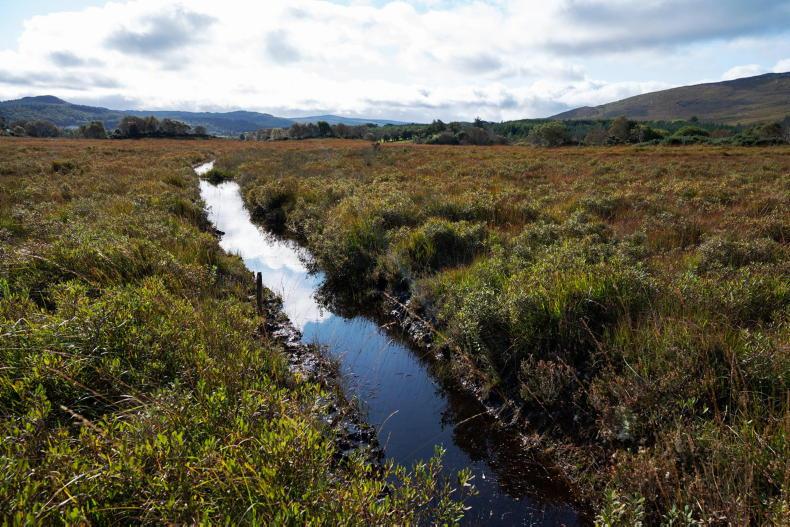




 This is a subscriber-only article
This is a subscriber-only article




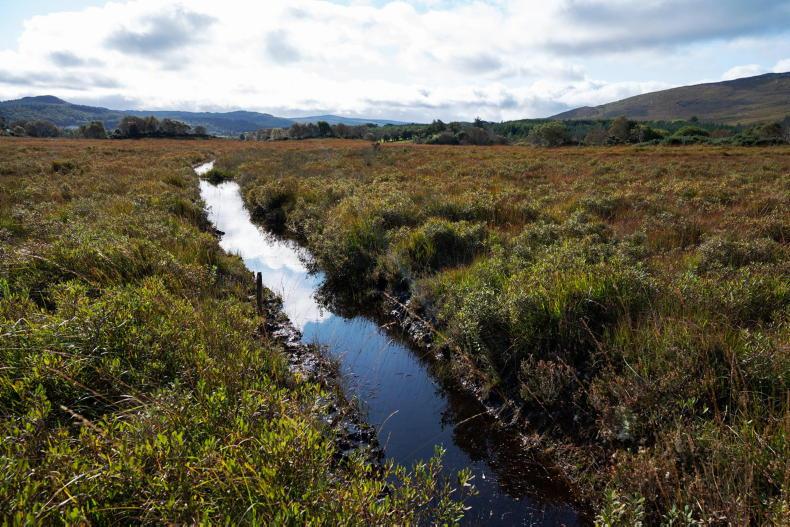





SHARING OPTIONS: